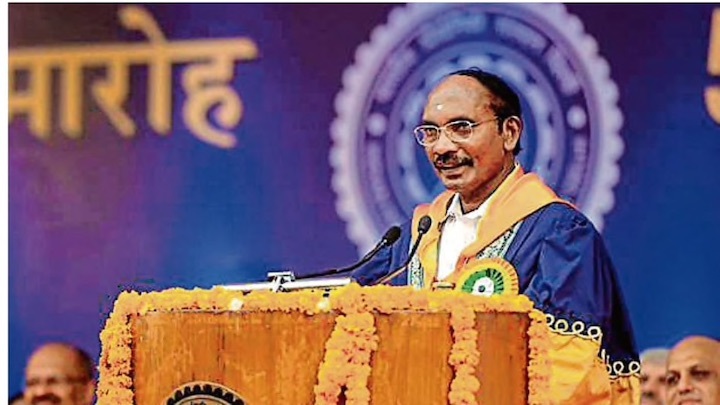3.11.2019
At the IIT ceremony, K Sivan spoke about the upcoming solar mission Aditya L1, the human spaceflight programme, testing of the 200 ton semi-cryo engine and the small satellite launch vehicle that is to have its test flight in December this year or January 2020.

The Indian Space Research Organisation (Isro) will demonstrate a soft-landing on the moon in the near future, said Isro chairperson K Sivan at the IIT Delhi convocation ceremony, over a month after the Vikram lander failed to do so.
“Let me assure that Isro will pull all its experience, knowledge and technical prowess to set things right and demonstrate soft landing in near future. And Chandrayaan-2 is not the end of story,” Sivan said.
Scientists from Isro lost contact with the Vikram lander just before the touchdown during the “15 minutes of terror”. Had it landed, India would have been the fourth country to land on the moon after the USA, erstwhile USSR, and China. It would have been the first country to have landed near the lunar South Pole.
“On the technology part – yes, we could not achieve soft landing, but all the systems functioned until 300m from Moon’s surface. Very valuable data is available to set things right,” said Sivan.
For this, he gave the example of the Augmented Satellite Launch Vehicle (ASLV), the launch vehicle programme that was terminated in favour of developing what is now the country’s workhorse rocket Polar Satellite Launch Vehicle (PSLV).
As for taking risks, he gave the example of the founder of India’s space programme Vikram Sarabhai. “Starting a space programme in a country like India in the 1960’s was one big crazy idea. But Dr. Vikram Sarabhai foresaw the potential of space technology in transforming India,” said Sivan.
At the ceremony, he also spoke about the upcoming solar mission Aditya L1, the human spaceflight programme, testing of the 200 ton semi-cryo engine and the small satellite launch vehicle that is to have its test flight in December this year or January 2020.
Quelle: hindustantimes
